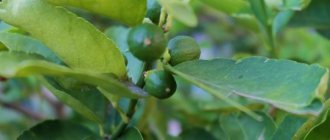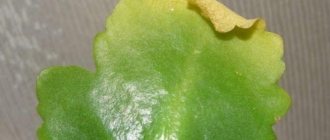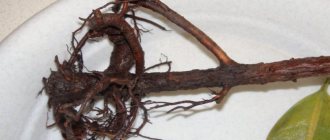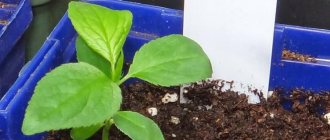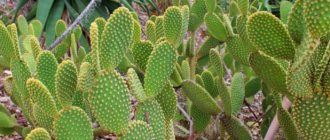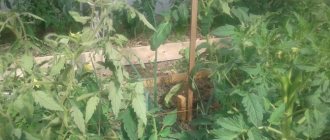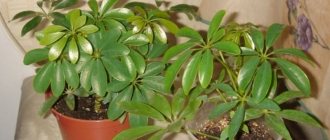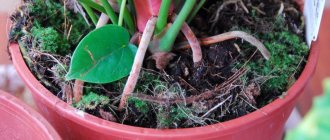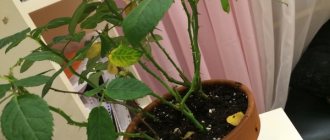Causes of blackening of leaves in gardenia
If the leaves of a gardenia begin to turn black and fall off, it means that there is insufficient watering and the air humidity in the room is too low. You need to water the plant more often, pour pebbles, expanded clay or moss into the tray and constantly moisten them, spray regularly, trying not to wet the buds and flowers. The cause of brown spots on the leaves can be even a one-time drying out of the soil, as well as sudden temperature changes.
If your bush has shriveled and fallen off several of its lower leaves, there is no cause for concern yet. Due to a natural process, the plant can periodically shed old foliage. But if this becomes widespread, and the drying out has spread even to the upper, young leaves, it is worth sounding the alarm.
The cause of leaf fall in gardenia may be:
- sunburn;
- a sharp drop in temperature;
- excess or lack of moisture;
- pest damage.
What to do with gardenia that has received burns
Like any flowering crop, gardenia is demanding on lighting and will not set buds in the shade. Please note that direct rays are deadly for her. The tender leaves darken before our eyes, become covered with dry spots, and fall off. There is no way to restore them, so take care that the remaining leaf cover is not damaged.
Carefully remove the blackened leaves and move the pot to a dark place.
Lack of heat
Gardenia loves not only light, but also warmth. Although its relatives grow well in open ground in the fresh air, this variety needs stable positive values. The optimal temperature for keeping indoor gardenia should not fall below 18°C. Otherwise, blackening and falling leaves are inevitable. Urgently move the bush to a warm room where there should be no draft.
Lack of watering
With a lack of moisture, everything is clear: in overdried soil, gardenia simply begins to dry out. You can restore it by letting it “drink” to your heart’s content, preferably through a pan. Spraying the crown will not hurt, but moisture should not get on the buds, if any.
But if the flower is constantly flooded, the roots begin to suffer and rot. They can no longer provide the above-ground part with adequate nutrition. Only a complete replacement of the soil can save a gardenia, provided that not all the roots have rotted. Otherwise, there will only be a chance to take cuttings.
Pest attack
The spider mite loves the flower the most. He bites through the leaf plate, drinks the juice and it dries up. It is almost impossible to see the insect without a magnifying glass, but its web on the back of the leaves “gives it away”. Remove them immediately, wash the bush with soapy water and treat with an insecticide, otherwise the mite will spread to other indoor plants. Such drugs as Actellik, Akarin, Fitoverm work well.
What diseases affect the flower?
If at least one rule is violated, diseases can overcome the flower. The danger comes from viral, fungal (rust, powdery mildew, various rots), and bacterial diseases.
You can tell that a plant is sick by the leaves, or more precisely by the spots that appear on them.
Mealybug under a microscope.
Powdery coating on the leaves on the underside indicates a fungal disease called powdery mildew. If brown spots appear on the stems and foliage, it means the plant is affected by rust, and if brown tubercles appear on the leaves, this means scab.
It happens that the leaves of a flower turn black. There may be several reasons for this. When the leaves turn black below, this is the result of excessive watering and compacting the soil in the pot. Because of this, the roots lack oxygen. It happens that due to frequent watering, silting of the drainage occurs. In this case, you need to thoroughly loosen the soil in the pot. Also, the bottom of the leaves turn black due to excess fertilizer.
When the foliage above turns black, pests may have appeared or the flower has become ill. It is necessary to treat gardenia with the drugs mentioned above.
Viral diseases appear inside the leaf. In any disease, damage begins from the leaves. Their color changes, the spots increase, and the leaves begin to fall off. Having noticed the affected leaves on a flower, they should be immediately torn off and burned, and the gardenia should be isolated from other flowers and treated with special means.
If the plant is severely damaged, 3-4 treatments will have to be done. To prevent diseases, the flower can be treated 1-2 times with Abiga-Peak, colloidal sulfur or other products containing copper.
We must not forget that diseases can be transmitted along with the soil. To make gardenia more resistant to diseases, it is necessary to feed the plant with potassium and phosphorus fertilizers in a timely manner.
As you can see, gardenia is a very capricious plant that requires daily attention and proper care. To grow a healthy, beautiful plant and make it bloom, you will need to put in a lot of effort.
Why do gardenia leaves turn yellow?
This is the most common disease of gardenia. The leaves turn pale, yellow, sometimes only between the veins. In any case, such manifestations indicate unfavorable conditions for keeping the plant. Causes:
- Incorrect watering mode
Very often, gardenia turns yellow when the soil is over-moistened or, conversely, after drying. Watering is needed immediately after the top layer of soil has dried by 1-2 phalanges (depending on the size of the plant and the depth of the pot); you cannot wait for the earthen clod to dry completely. Water quality also plays a huge role and can easily lead to yellowing of gardenia leaves. The capricious plant only recognizes well-settled, ideally boiled or filtered (from chlorine) water. And only warm! Cold and hard water is not suitable. Yellowing of gardenia leaves due to overwatering
- Incorrectly selected substrate
When thinking about why gardenia turns yellow, do not ignore the substrate in which it grows. Gardenia prefers acidic soils; it will feel bad in all others. In neutral and, especially, alkaline substrates, its roots cease to adequately absorb the necessary substances.
An acidic substrate (pH 4-5) can be bought at a flower shop called “Azalea” or “Gardenia”. You can mix pine needles into the finished substrate yourself - for additional acidification
The soil for gardenias should be acidic.
Unfortunately, even acidic soil becomes alkalized over time. Tap water is alkaline in most regions. To prevent changes in the soil reaction, water the gardenia with acidified water every 10 days. For acidification use:
- Citric acid - several crystals (at the tip of a knife) are dissolved in 1 liter of water;
- Oxalic acid – 1/3 tsp. per 3 liters of water, after which it is left for at least 3-4 days. Oxalic acid is good because it not only acidifies water, but also precipitates calcium salts, an excess of which is harmful to most plants;
- Lemon juice – 2-3 drops per 1 liter of water;
- Peat – 200 g of peat are poured into 3 liters of water and left for 24 hours.
- Chlorosis
Chlorosis manifests itself in uneven yellowing of gardenia leaves: the veins remain green against the background of yellowing, sometimes almost discolored, plates. Chlorosis is associated with a lack of iron in the soil. By the way, chlorosis in gardenia is almost an “occupational disease”; the war against it must be waged constantly, otherwise the flower will definitely get sick. Chlorosis occurs when the soil becomes alkalized, so the first step for prevention is to water the gardenia with acidified water. If there are clear signs of chlorosis, you should act as follows:
- spray and water the gardenia with iron-containing preparations (Ferovit, Micro-Fe, etc.);
- or prepare homemade iron chelate;
- As an additional source of iron, bury rusty nails in the soil.
- Lack of lighting
Gardenia also turns yellow with insufficient light. In this case, the leaves turn pale, evenly, on all branches of the bush.
- Lack of nutrition
Gardenia, like any ornamental plant, needs feeding during the period of growth and flowering. Choose a good complex fertilizer with additional iron and magnesium content. Gardenia has a special love for these two microelements. We have already written about iron above - gardenia reacts to its deficiency by yellowing of the leaves (chlorosis). A lack of magnesium also causes leaves to turn pale. Magnesium sulfate, used for spraying at a concentration of 20 g per 10 liters of water, will help eliminate this process.
What to do if gardenia leaves turn yellow
There can be many reasons for yellowing and sometimes falling leaves of gardenia jasmine, so you need to analyze its care and identify exactly the drawback that led to this problem:
- Lack of iron in the soil. This can be corrected by sticking ordinary nails into the ground, which, when they begin to rust, will become a natural source of iron. You can spray using a weak solution of ferrous sulfate;
- Insufficiently acidic soil. It is necessary to water with water with the addition of citric acid (one teaspoon per liter of water) or lemon juice. You can use an infusion of peat on water for irrigation;
- Watering with cold or hard water. Gardenia should be watered only with warm and soft water; it does not tolerate hypothermia of the root system;
- Low air temperature. Gardenia jasmine should be kept at an air temperature of at least 16 degrees;
- Pests. Yellowing leaves may indicate a scale or spider mite infestation;
- Yellowing of leaves can be caused by temperature changes or direct exposure to sunlight.
Pests on the bush
Leaves disappear if spider mites have settled on them. It sucks out the juices and entwines the bush with an invisible web, and can also spread to other plants. If a pest is detected, the flower must be isolated, all affected leaves must be removed and several treatments must be carried out with Actellik or Akarin.
There may be several reasons that cause discomfort to the plant: waterlogging of the soil, which leads to compaction of the substrate, or, conversely, too dry soil; low air humidity; lack of iron in the soil; spraying the plant under the scorching rays of the sun; drafts; pests How to eliminate the causes of the disease Problems with the substrate (overdried or waterlogged) or air humidity First of all, it is necessary to tear off all blackening leaves. Next, the gardenia is treated with one of the fungicides: foundationol; Uzgen; Ferazim; benlat; Benomyl. After processing, the plant along with the pot is placed in a spacious plastic bag - a kind of greenhouse. The flower is sprayed and the bag is tied. That is, ideal conditions are created for 100% air humidity. The package must be opened periodically for ventilation. Water the gardenia with settled water when the top layer of soil becomes completely dry. If you notice that the plant is coming to life, begin to gradually accustom it to indoor conditions - remove the plastic bag for a certain time. During the rehabilitation period, gardenia cannot be fertilized. Insufficient amount of iron in the substrate Gardenia prefers acidic, iron-rich soil. But excessive watering can wash away the components necessary for the plant. If the leaves of the gardenia turn black and fall off, and you know that you have not fed the substrate with a weak acid solution and iron-containing preparations for a long time, this is a clear sign of a lack of iron in the soil. To correct this error, you can use the following compositions to saturate the substrate with the necessary components: iron chelate “Antichlorosin”; micro Fe; ferovit. You can also use the folk method - stick a few rusty nails into the ground and water the plant with water acidified with citric acid (several crystals per 1 liter of water). Fertilizing is carried out until the plant is completely cured. How to get rid of gardenia jasmine pests Spider mites especially often prey on gardenia. They spin webs under the leaves, and the leaves begin to turn black and fall off. In this case, damaged leaves are urgently removed. The plant is treated weekly with the following preparations: actellik; acarin; neoron; bicol; demitan, etc. Spider mites quickly adapt to poisons, so medications need to be changed. This pest does not tolerate moisture; constant spraying of the plant with water is terrible for it.
Gardenia leaves fall off - reasons and what to do
This also happens often. This is due to the stress your plant has recently received.
Causes:
1. Lack of watering
When the gardenia begins to shed leaves, for example, they suddenly turn yellow and crumble or fall off without changing their appearance, then this is a consequence of drying out. Adjust watering, and to combat stress, use spraying with an immune stimulant - epin. It would not be superfluous to carry out “reanimation” for gardenia. Spray it with water or epin solution and put a plastic bag (garbage bag, for example) on the bush. Leave it like this for a day. This is a great way to quickly tidy up dried gardenia.
2. Draft
Gardenia leaves fall off if it is “blown out”. Of course, gardenia lovers know that she loves cool weather. However, you should not place it near an open window from which it blows.
Gardenia buds fall
But this is very unpleasant. You are waiting for the collected gardenia buds to open, but all of a sudden they fall off. It's a shame, but there are reasons for this.
Causes:
1. Dry air
Gardenia is a plant native to the humid tropics. Loves humid air; in dry climates it refuses to bloom and throws buds. Humidify the air around the flower. How to do it? For example, like this:
- Place the gardenia pot on a tray with damp expanded clay. The tray should be larger than the base of the pot so that moisture from the expanded clay is transferred to the leaves;
- Spray the gardenia more often, being careful not to get it on the buds and open flowers;
- place a jar of water next to the plant (indoor fountain, aquarium, etc.);
- use a humidifier.
2. Draft
Protect gardenias with buds from drafts, otherwise flowering will be postponed to next year.
3. Temperature fluctuations
Too sudden changes in temperature conditions can lead to stress and, as a result, the loss of gardenia buds.
4. Changing the location, rotating the pot relative to the light source
It is not advisable to twist a flower with collected buds. Some specimens tolerate this normally, while others react by drying out the peduncles.
5. Untimely transplant
Gardenias are usually sold in stores with flowers or buds. Transplanting a plant in this state does not lead to anything good; the buds begin to crumble.
Features of cultivation
The plant is quite demanding in terms of maintenance conditions. Beginning gardeners may encounter difficulties caused by watering, lighting, fertilizing, and the composition of the soil for replanting.
Gardenia does not tolerate being moved from one place to another; you cannot even turn the pot, because the leaves and buds may begin to fall off.
Important. The plant must be provided with all the conditions necessary for a comfortable existence. If you don’t do this, you may never get high-quality development and long flowering.
Gardenia doesn't bloom
Causes:
- Unsuitable temperature conditions
Gardenia begins to bloom buds only within strict temperature limits - from 18 to 25°C. Otherwise, it may hold the buds for a very long time, until the necessary conditions arise.
- Lack of lighting
The best place for gardenia is eastern windows, where the sun peeks in in the morning. South windows are too hot; midday rays cause leaf burns. With north-facing windows, flowering of gardenia may be difficult. Although, if there are no dense trees under the windows that create a hopeless shadow in the apartment (house), then there is a chance of flowering. Especially if in the summer you put your gardenia on the balcony, ideally, put the pot with it in a balcony planter or box. Diffused sunlight combined with fresh air works wonders! The traditional flowering time for gardenia is July-October. But some gardeners manage to bloom 3 times a year. This is possible if you use backlight lamps in winter.
- Lack of nutrition
For gardenia to bloom, it must “eat” properly. The most important elements for it are potassium, phosphorus, iron and magnesium. Choose a fertilizer with a high concentration of these substances and you are guaranteed luxurious flowering! To further stimulate flowering, you can use the effective preparations “Zircon”, “Bud”, “Domotsvet”.
- Dry air
In dry conditions, gardenia can also become capricious. A very good way to stimulate gardenia flowering is called “steam baths” by gardeners themselves. So, we bring the gardenia into the bathroom and place it next to the bathtub. Turn on the hot water so that steam comes out. We fill the bath to the brim and leave, leaving the gardenia to bask in 80-90% humidity. Let it sit there for several hours, you can even leave it overnight. You can do such “baths” every week until the result is achieved (the appearance of buds). Regular spraying and “steam baths” stimulate gardenia to bloom
- Alkaline soil
Gardenias growing in neutral or alkaline soil are unlikely to bloom. Select high-quality soil with an acidic reaction for the flower and constantly maintain it by acidifying the irrigation water.

